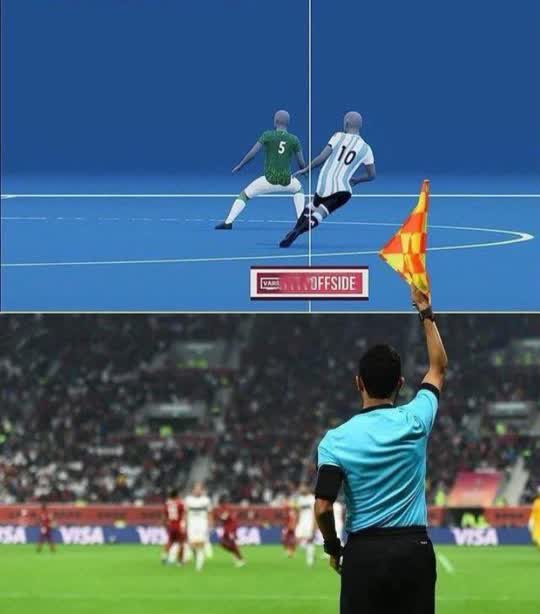In football, the offside rule (Law 11) states that a player is in an offside position if any of their body parts, except the hands and arms, are in the opponents’ half of the pitch, and closer to the opponents’ goal line than both the ball and the second-last opponent (the last opponent is usually, but not necessarily, the goalkeeper).
The offside rule is very integral to the beauty of the “round-leather game”. Without the offside law, teams would just simply be kicking long balls from one end of the field to the other.
Also, tactics that sees teams skillfully weave their way through opposition defences would disappear. Attacking forwards would simply lay siege on the opposition goal in anticipation of a long ball pass.
Equally, the battle for midfield supremacy that excite fans would be missing in action, while soccer matches would end with high scores similar to basketball.
FootballOrbit brings you the evolution of the offside rule in football.
Evolution of the offside rule
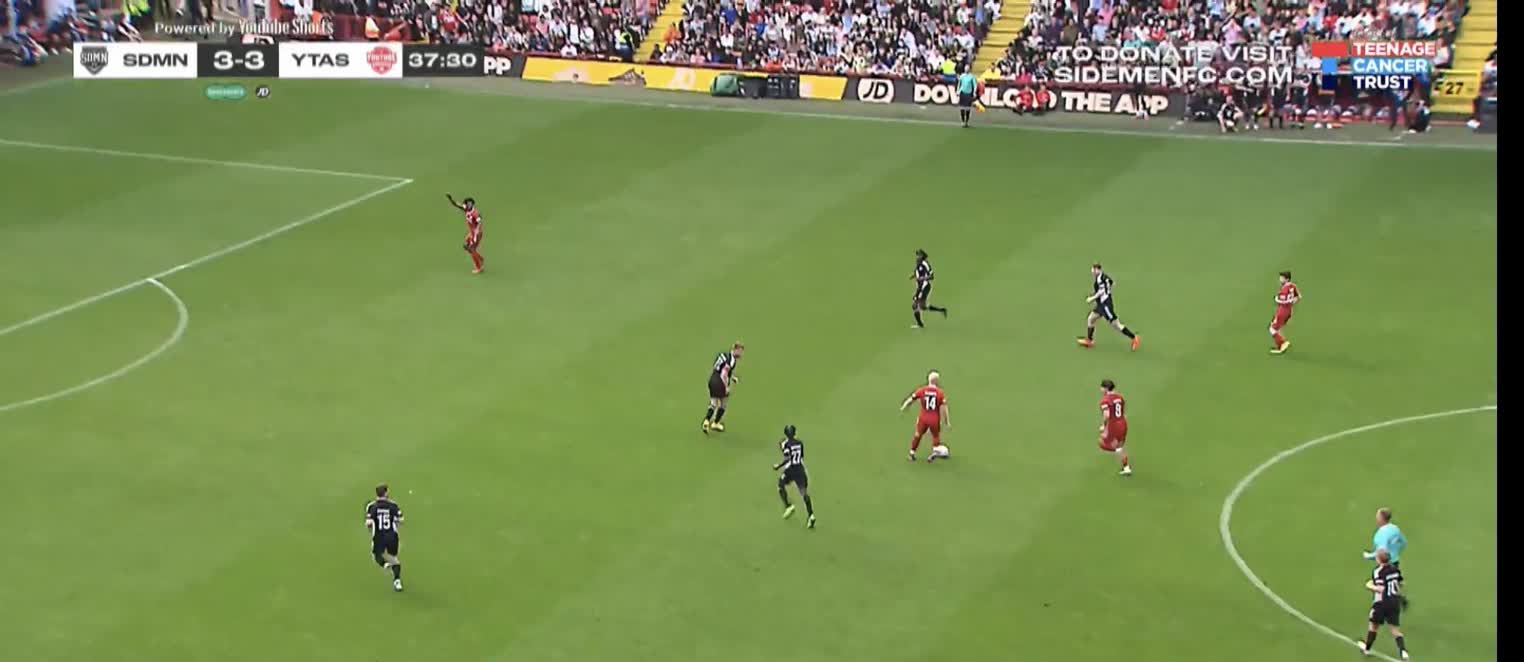
The offside rule in football evolved from an initial 1863 version requiring three opponents in front of a player, to the 1925 rule requiring just two opponents, and finally to the current 1990 rule where a player is onside if level with the second-to-last defender.
These changes were made to make the game faster and more attacking.
1863 (Original Rule): Three players ahead or offside
The first widely agreed offside law was cemented with the formation of the Football Association (FA) and the publication of its laws in 1863. The rule prohibited any attacking player from being in front of the ball when it was kicked forward.
A player was offside if they were in front of the ball. This was later refined (1866) to require three opponents to be between the attacking player and the goal line.
1925: Two players
The rule was changed to require only two opposing players to be between the attacker and the goal line. This change significantly increased the number of goals scored in the following seasons.
Furthermore, the amount of goals being scored increased due to the 1912 rule preventing goalkeepers from handling the ball outside the penalty area and another rule from 1920 banning offsides from throw-ins.
1990: Second-to-last opponent
The rule was updated in 1990 to state that a player is onside if they are level with the second-to-last opponent. This means a player is not offside if they are in line with, or behind, the second-to-last defender.
It was the lack of exciting play at the 1990 FIFA World Cup in Italy that prompted the new rule change.
Also, in 1995 came a subtle change to the text of the Laws of the Game. From now on, a player was only deemed to be active if he was “gaining an advantage by being in that position”. These two alterations were an attempt to make the game more attractive and lead to more goals.
2005: Body part clarification
The rule was clarified to state that it is a part of the attacker’s body with which they can legally play the ball that is measured against the penultimate defender.
Likewise, a player was only offside if he or she “touched the ball or was in the position to make physical contact with an opponent.”
In 2005, the offside rule was slightly amended in its wording. It was this slight tweak that clarified what it meant for a player to be “interfering” with play.
From then on, there would be no more instances of a player collecting a pass and the flag going up because his teammate had wandered offside elsewhere.
For example, if a defender steps up because he is aware he or she would force a forward into an offside position, that is no longer sufficient to render him active.
This new rule can be perceived to be a bit confusing for defenders because the other player who was in an “offside” position could now even continue to attack and even receive a pass to score, as long as it was not a pass played forward.
Moreover, this latest change to the rulebook means that defences can no longer be completely confident that a player behind them is out of the game, which in turn means that the offside trap as a general strategy is reduced in safety.
2016 (Introduction of VAR):
With the introduction of Video Assistant Referee (VAR) technology, referees can now review offside decisions to ensure accuracy, which has led to controversies over the fine margins involved.
VAR was introduced in the Premier League at the start of the 2019/20 season. There has been plenty of discussion, before, during and after the game, because of decisions related to the offside rule, even though the purpose of VAR was to remove controversy.
Marginal offsides before goals is one the scenarios that VAR was brought in to assist with should the referee be unable to initially give the decision on their own.
Unlike decisions about potential fouls, yellow and red cards, the offside rule is not open to interpretation and, with the introduction of VAR, the decision can now be made in a completely objective manner.
What does it mean for a player to be in an offside position in football?
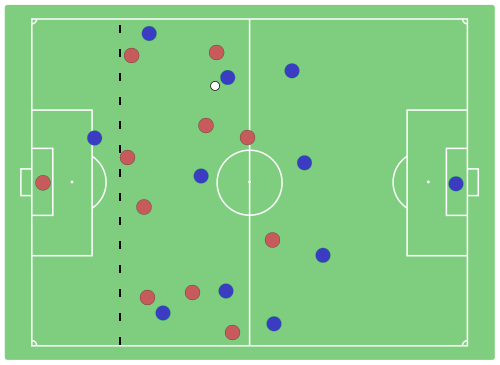
Being in an offside position is not an offence in itself, but a player so positioned when the ball is played by a teammate can be judged guilty of an offside offence if they receive the ball or will otherwise become “involved in active play”, will “interfere with an opponent”, or will “gain an advantage” by being in that position.
Moreso, the offside is often considered one of the most difficult-to-understand rules in football.
A player is in an “offside position” if they are in the opposing team’s half of the field and also “nearer to the opponents’ goal line than both the ball and the second-last opponent.
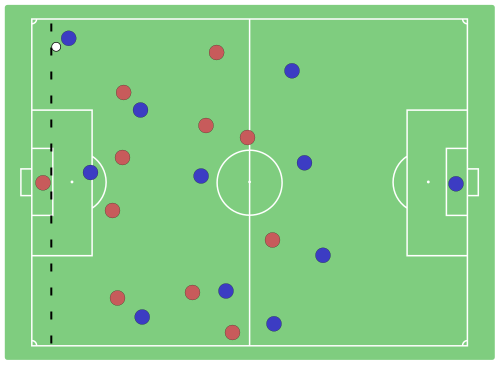
Meaning, a player is in an offside position if two conditions are met:
(a). Any part of the player’s head, body or feet is in the opponents’ half of the field (excluding the half-way line).
(b). Any part of the player’s head, body or feet is closer to the opponents’ goal line than both the ball and the second-last opponent.
The goalkeeper counts as an opponent in the second condition, but it is not necessary that the last opponent be the goalkeeper.
What constitutes an offside offence in football?
A player in an offside position at the moment the ball is touched or played by a teammate is only penalised for committing an offside offence if, in the opinion of the referee, they become involved in active play by:
Interfering with play
— “playing or touching the ball passed or touched by a team-mate”.
Interfering with an opponent
— “preventing an opponent from playing or being able to play the ball by clearly obstructing the opponent’s line of vision or challenging an opponent for the ball or clearly attempting to play a ball which is close to them when this action impacts on an opponent or making an obvious action which clearly impacts on the ability of an opponent to play the ball”.
Gaining an advantage by playing the ball or interfering with an opponent when it has
— “rebounded or been deflected off the goalpost, crossbar, match official or an opponent
— been deliberately saved by any opponent.
There is no offside offence if a player receives the ball directly from a goal kick, a corner kick, or a throw-in.
Also, it is not an offence if the ball was last deliberately played by an opponent (back pass); except for a deliberate save.
In this context, according to the IFAB, “A ‘save’ is when a player stops, or attempts to stop, a ball which is going into or very close to the goal with any part of the body except the hands/arms (unless the goalkeeper within the penalty area).”
An offside offence may occur if a player receives the ball directly from either a direct free kick, indirect free kick or dropped-ball.
Since offside is judged at the time the ball is touched or played by a teammate, not when the player receives the ball, it is possible for a player to receive the ball significantly past the second-to-last opponent, or even the last opponent, without committing an offence, since an onside player is free to run to any position after the ball is played.
A player who was offside when their teammate played the ball (and therefore liable for an offside offence should they interfere with play) but becomes onside when the ball is played by another player then ceases to be liable for an offside offence.
That is, the determination of offside is reset each time the ball is played by a different onside player.
Offside sanction in football
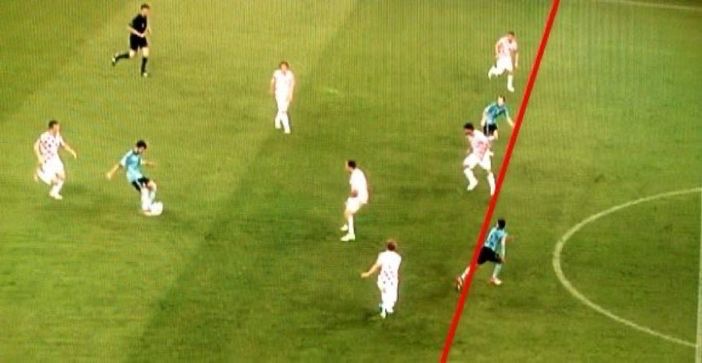
The sanction for an offside offence is an indirect free kick for the opponent at the place where the offence occurred, even if it is in the player’s own half of the field of play.
Officiating
In enforcing the offside rule, the referee depends greatly on an assistant referee, who generally keeps in line with the second-to-last opponent, the ball, or the halfway line, whichever is closer to the goal line of their relevant end.
Furthermore, an assistant referee signals for an offside offence by first raising their flag to a vertical position and then, if the referee stops play, by partly lowering their flag to an angle that signifies the location of the offence:
— Flag pointed at a 45-degree angle downwards: offence has occurred in the third of the pitch nearest to the assistant referee;
— Flag parallel to the ground: offence has occurred in the middle third of the pitch;
— Flag pointed at a 45-degree angle upwards: offence has occurred in the third of the pitch furthest from the assistant referee.
Besides, the assistant referees’ task with regard to offside can be difficult, as they need to keep up with attacks and counter-attacks, consider which players are in an offside position when the ball is played, and then determine whether and when the offside-positioned players become involved in active play.
Likewise, the risk of false judgement is further increased by the foreshortening effect, which occurs when the distance between the attacking player and the assistant referee is significantly different from the distance to the defending player, and the assistant referee is not directly in line with the defender.
VAR and semi-automation
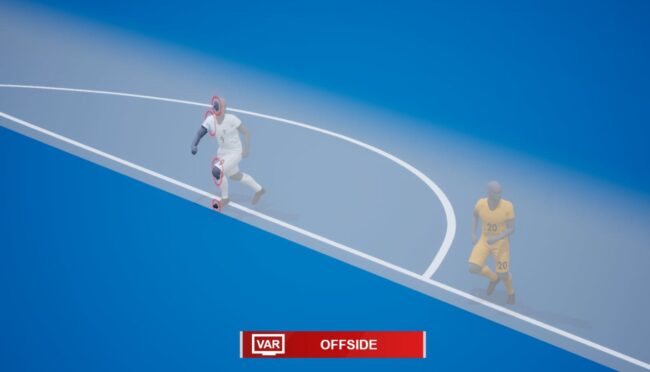
In matches using Video Assistant Referees (VAR), assistant referees who decide on offsides are required to avoid raising the flag for an offside decision until the play proceeds to a natural conclusion, unless the offside is obvious.
This allows a team who might have been called for an offside offence to instead continue and any subsequent goal to be checked by VAR.
Beginning in the mid-2020s, Semi-Automated Offside Technology (SAOT) began to be used at high-level games.
SAOT systems use multiple high-speed cameras to determine the positions of players at the moment the ball is kicked, assisting the VAR in making speedy offside decisions.
Moreso, SAOT produces 3D virtual replays of the situation which are displayed on stadium screens and broadcasts.
What is an offside trap?
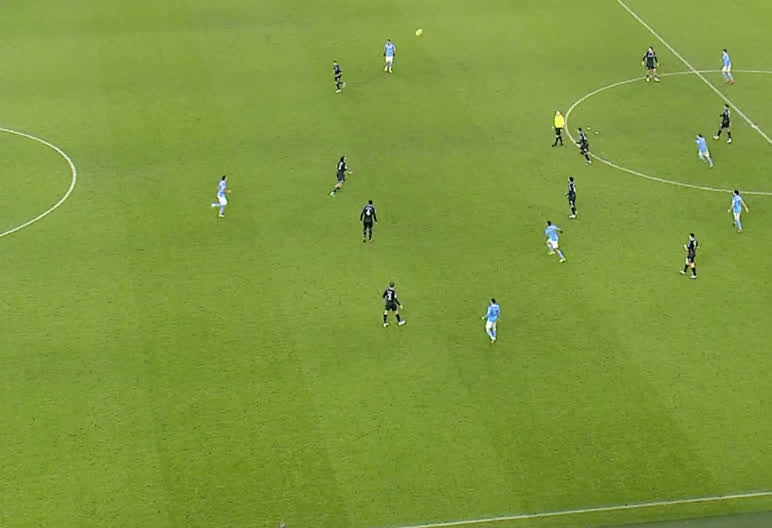
Pioneered in the early 20th century by Notts County and later adopted by influential Argentine coach Osvaldo Zubeldía, the offside trap is a defensive tactic designed to force the attacking team into an offside position.
Here, just before an attacking player is played a through ball, the last defender or defenders quickly move upfield, thus, isolating the attacker into an offside position.
Therefore, to successfully execute an offside trap requires careful timing by the defence and is considered a risk, since running upfield against the direction of attack may leave the goal exposed.
Now that changes to the interpretations of “interfering with play, interfering with an opponent and gaining an advantage” mean a player is not guilty of an offside offence unless they become directly and clearly involved in active play, players not involved in active play cannot be “caught offside” — making the offside trap tactic riskier.
An attacker, upon realising they are in an offside position, may simply choose to avoid interfering with play until the ball is played by someone else.
Future prospects
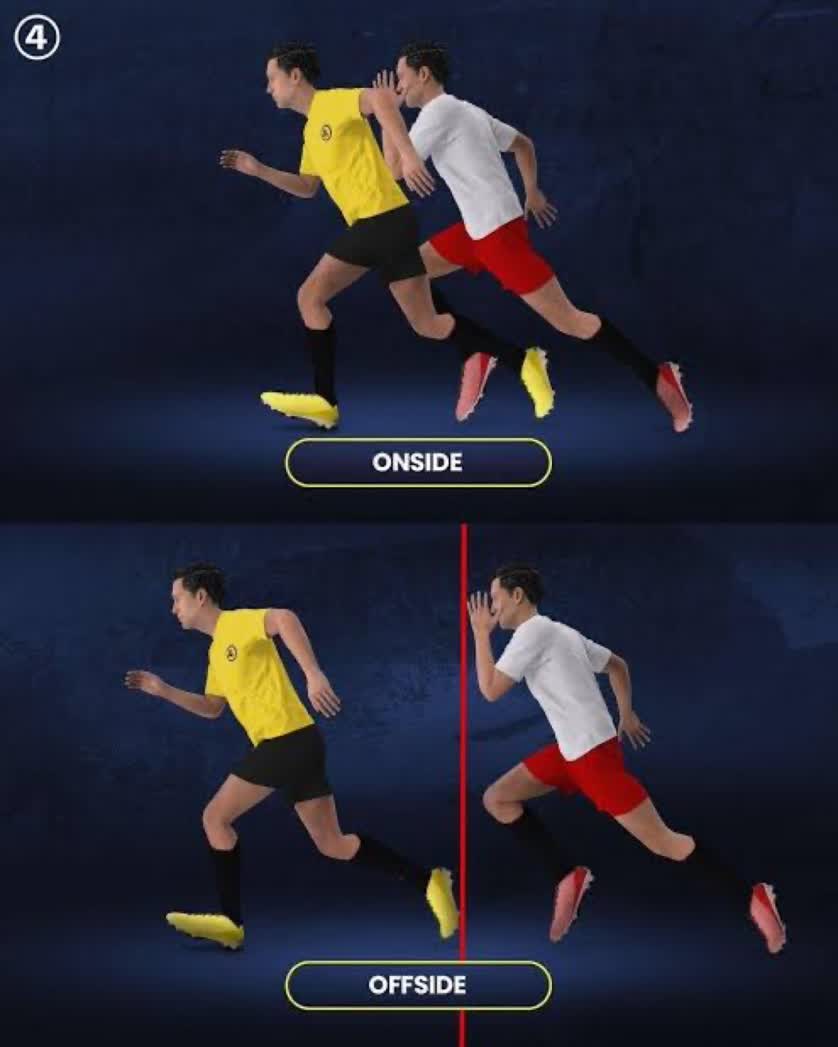
Some continue to question why offside is needed at all in football. Dutch legend, Marco van Basten, in his role as technical director for FIFA from 2016 to 2018, campaigned for its removal.
Van Basted noted that fans wanted more exciting football with fewer stoppages and delays. To achieve, this he argued that removing offside will simplify the game and make it more interesting and dynamic.
He was quickly countered by several managers, who felt that scrapping the offside rule will ruin the beauty of the game.
Furthermore, former Arsenal manager Arsene Wenger proposed another amendment; where if any part of an attacking player’s body with which they can legally score is onside when the ball is played, then they are not offside, rather they should be deemed onside.

